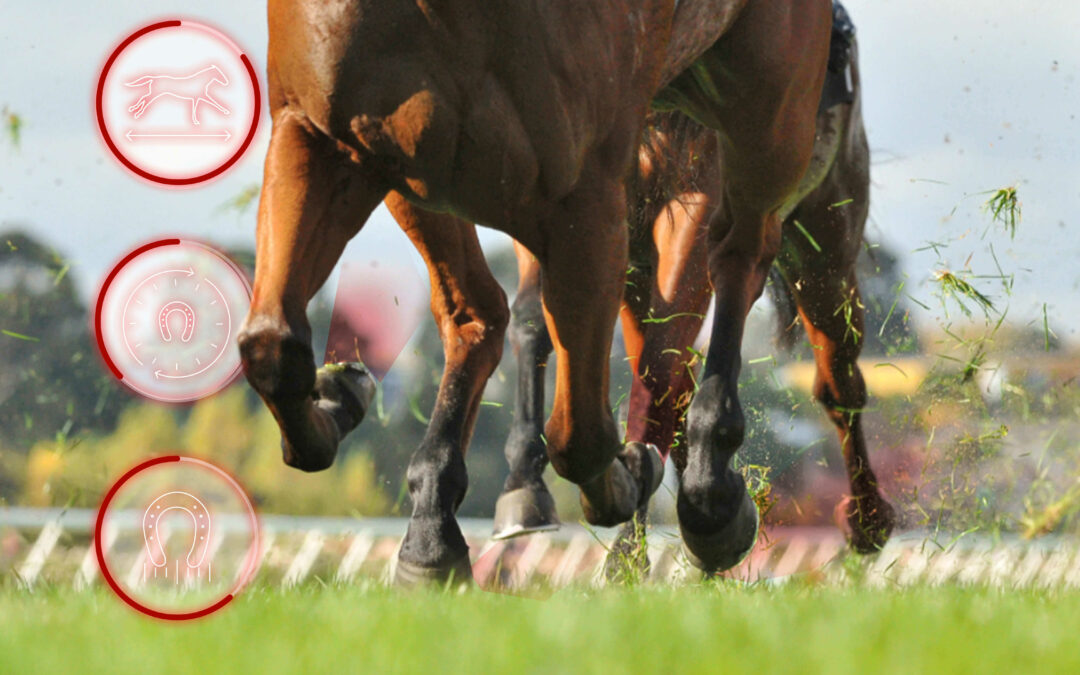Here is the case of a young horse in full preparation for a Breeze-up sales. He won two 1200m races in three starts, during the end of his 2yo season. His data analysis shows an extremely low heart rate, which we will explain thanks to the analysis of his locomotor profile and a cardiac ultrasound.
Heart rate analysis in the racehorse
During his breeze prep, we first noticed that he has a low maximum heart rate, not exceeding 208 BPM at almost 70 km/h.
Bear in mind that each horse has his own max heart rate, ans it is not correlated with the performance level. It has been shown that the maximum recorded heart rate of horses ranged from 204 to 241 BPM (Evans, 2007).

Data from the EQUIMETRE platform
Locomotor profile analysis
Regarding his locomotor profile, the colt has a very high stride rate, which is clearly noticeable on track: he reaches 2.72 strides per second. His stride length rarely exceed 7 meters, which matches a sprinter profile.

Data from the EQUIMETRE platform
Sprinters: Sprinters are horses that develop their best over short distances. In order to reach high speeds quickly, so-called “sprinters” will develop a very sustained stride frequency (more than 2.45 strides per second). However, this very high stride frequency is not sustainable for the horse over a long distance.
Milers & stayers: These are horses that race over longer distances. In general, milers race for distances of 1600m and more while stayers race for 2400m and more. These longer-distance races require a very high level of endurance which is characterized by great stride length and a fairly low stride frequency.
Breathing and locomotion
When the heart beats, oxygen is delivered to the muscles via the blood that is pumped out with each beat. Oxygen is an energy catalyst, allowing the muscles to use sugars and fats more efficiently. The need for oxygen spikes at the start of an effort, which is why breathing quickens and the heart beats quicker.
The heart’s function and the horse’s respiration during exercise are thus closely linked in order to oxygenate the muscles and allow them to operate more efficiently. The horse’s breathing during canter, on the other hand, is less obvious: it mechanically follows the stride pattern. In fact, the horse is only allowed to breathe in during projection. To breathe faster, he must increase the frequency of his strides in order to repeat this projection time faster, and therefore his inspirations more frequently.

The issue
Taking these thoughts into account, it may therefore seem a bit contradictory that a horse with a low maximum heart rate can sustain such a high stride rate. Indeed, his heart rate and locomotor profile seem incompatible.
Conclusion
An echocardiogram of the left ventricle helped explain the colt’s physical abilities, which were justified by a powerful heart capable of expelling a large volume of blood and therefore oxygen to the muscles. Thanks to its considerable cardiac output, the heart does not need to beat as fast as one would expect to meet the oxygenation needs of the muscles, and thus support this high stride rate.
Indeed, cardiac adaptations in the form of hypertrophy respond to training stimuli. Training leads to an increase in left ventricular muscle mass, chamber size and capillary density. This increase (hypertrophy) leads to an increase in cardiac capacity (endurance), which in turn results in an increase in the volume of blood pumped per heartbeat (stroke volume). A higher ejection volume means that for a specific cardiac output (blood flow), the heart rate can be lower because more blood is pumped per beat.
It is important to remember that the power of the heart, revealed by the individual maximum heart rate, is not correlated to the horse’s performance level. In fact, the fitness level does not rely only on the heart strength, many other parameters come into play: respiratory capacities, muscular capacities, efficiency of the blood system and many other factors. We have never been surprised to see horses with a maximum heart rate above 230 BPM winning at the highest level of competition.
Keywords: locomotor profile, heart rate, respiratory capacities, data analysis, heart work, cardiac adaptations
Source :
Dr. Allan Davie (2012). Scientific training of Thoroughbred Horses (2nd ed).



